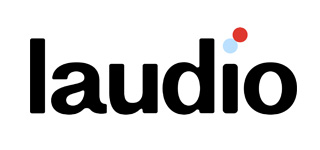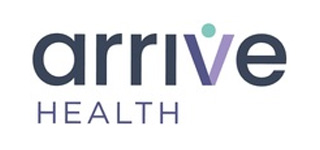Ivantis’ Commitment to Scientific Rigor Earns Primary Open-Angle Glaucoma Preferred Practice Pattern Designation and Fifth Publication in the Journal Ophthalmology
Ivantis Inc., developer of the novel Hydrus® Microstent, a minimally invasive glaucoma surgery (MIGS) device intended to lower eye pressure for open-angle glaucoma patients, announced today that the American Academy of Ophthalmology (AAO) has designated the Hydrus Microstent as “Level 1, Moderate Quality, Strong Recommendation” — the highest designation of any MIGS device — in its 2020 Preferred Practice Pattern® treatment guidelines (PPP) released during this year’s annual meeting.
“It’s an honor for our Hydrus device to be given such an emphatic treatment recommendation by the AAO, the most respected organization in U.S. eye care,” said Dave Van Meter, president and CEO of Ivantis. “Since our inception over a decade ago, one of our guiding principles has been to become the leading evidence provider in the entire MIGS space. This recommendation reflects our commitment to clinical rigor driven by our passion to develop a best-in-class device that will help the millions of people suffering from glaucoma. We are thrilled to receive the highest designation of any MIGS device as part of the AAO’s treatment guidelines.”
AAO’s PPPs are evidence-based recommendations designed to identify characteristics and components of quality eye care as guidance for the pattern of best practice. Each PPP is valid for five years from the date of issue. Guidelines are developed by the academy’s H. Dunbar Hoskins Jr., MD Center for Quality Eye Care and are academy-approved without external financial support. The guidelines are externally reviewed by experts and stakeholders prior to publication.
“This marks an important and meaningful step in the validation of the entire MIGS category. Inclusion of Hydrus as a recommended procedure by AAO has confirmed what many of us in clinical practice already know, which is that MIGS is a vital part of our surgical armamentarium for managing glaucoma,” said Douglas Rhee, M.D., chairman of the Department of Ophthalmology at Case Western Reserve University Hospital. “There are only three recommended MIGS procedures, and the evidence for Hydrus was rated as the strongest. This is an important validation of the Hydrus device and its potential impact for our patients.”
Horizon Peer-Reviewed Publication and Four-Year Data Distinctions
Ivantis also announced today that the peer-reviewed journal Ophthalmology published the complete three-year results from the HORIZON pivotal trial. The study demonstrates that the Hydrus Microstent is the first and only MIGS device to show a statistically significant reduction in risk for invasive secondary surgeries. This is the fifth peer-reviewed article on the Hydrus Microstent to be published in the industry’s preeminent journal.
Dr. Nathan Radcliffe, a board-certified ophthalmologist from the New York Eye and Ear Infirmary, presented the latest HORIZON data earlier this week at the annual AAO meeting. His “4-Year Results from the HORIZON Trial” was selected as the best poster of the session.
Ivantis has the distinction of providing the first-ever four-year complete follow-up data for a MIGS device in a Food and Drug Administration (FDA) pivotal trial (twice the duration of any other MIGS company’s complete follow-up). The complete five-year follow-up data will be announced next spring.
The latest findings from the HORIZON study confirm the benefits of the Hydrus Microstent reported at three years in Ophthalmology and show that those benefits are maintained through four years, notably reducing the need for invasive secondary glaucoma surgery and medications to control glaucoma. These important benefits were observed without increased safety risk associated with Hydrus surgery. No other MIGS device has presented continuous outcome data from the complete study population in a pivotal trial beyond two years.
The HORIZON study is the largest prospective, randomized, controlled trial conducted for a MIGS device and the first to have a global span. The study included 556 patients with mild to moderate glaucoma treated in 38 centers in nine countries in North America, Europe and Asia. The study was designed to demonstrate the safety and effectiveness of the Hydrus Microstent for lowering intraocular pressure (IOP) in glaucoma patients undergoing planned cataract surgery. Patients were randomized 2:1 to receive cataract surgery plus the Hydrus Microstent or cataract surgery alone. The two-year results of the trial provided the foundation for FDA approval of the Hydrus Microstent. Effectiveness outcomes exceeded those reported in any other MIGS pivotal trial, and the Hydrus Microstent was approved in the U.S. in August 2018.
Key Four-Year HORIZON Data Presented at AAO:
- 65% of Hydrus Microstent patients remained glaucoma medication-free, compared with 41% in the cataract surgery-only arm. This represents the highest margin of total medication elimination compared to the control group reported for any MIGS pivotal trial.
- Analysis shows that 2.1% of Hydrus Microstent patients required subsequent invasive glaucoma surgery, compared with 6% of the cataract surgery-only patients, which represents a clinically meaningful and statistically significant difference. This finding is consistent with the HORIZON three-year data, where, for the first time in a MIGS study, a statistically significant reduction in risk for invasive secondary surgery was shown.
- The overall safety profile of cataract surgery plus implantation of the Hydrus Microstent was similar to cataract surgery alone, including visual acuity and endothelial cell density loss (ECL) from two to three years, and from three to four years. Long-term complications were limited to focal peripheral anterior synechiae (13%, 4.3% obstructive, 8.7% non-obstructive).



